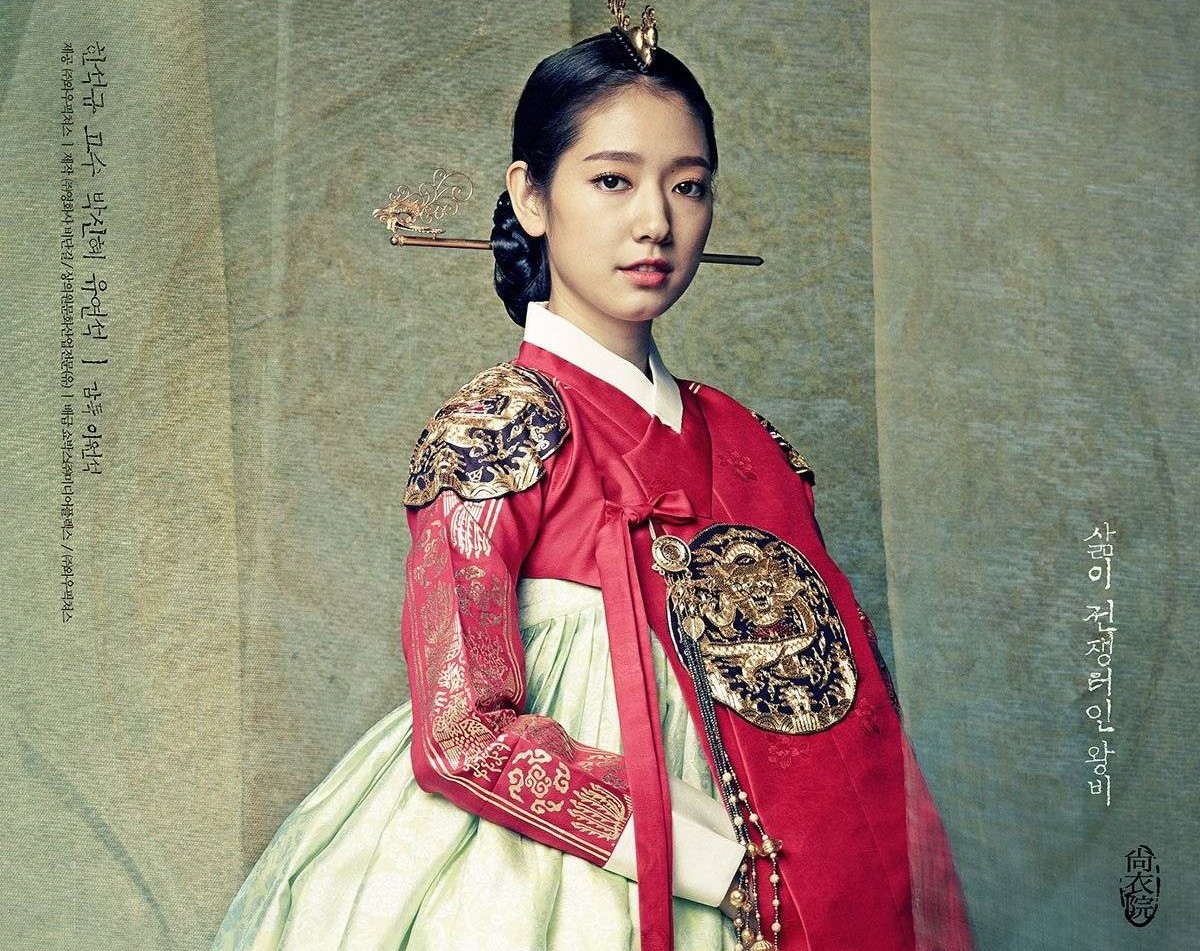Hanbok is most interesting in how it subtly references Korean culture through its colors and patterns often seen in Korean dramas and films

As the Queen in 'The Royal Tailor,' Park Shin-hye dons a magnificent hanbok. Photo courtesy of HanCinema
In English, hanbok equates to Korean clothing. Anecdotally, it was identified as a distinctive Korean dress in the 1900s, driven by burgeoning nationalism. Hanbok traditionally refers to the jeogori (top) and the chima (skirt) for women, and the jeogori and a loose-fitting baji (trouser) for men. It can be customized to look better by pairing a variety of coats, jackets, and other alternatives alongside different accessories.
In the past, Koreans would wear hanbok daily; it was designed for ease of movement. In contrast, most Korean events today, such as ceremonies and celebrations, involve the wearing of a hanbok. The image of people dressed in vivid, billowing robes and gowns is what comes to mind when thinking of this traditional Korean attire. The most intriguing part of it is how it subtly references Korean culture through its colors and patterns that are usually seen in myriad Korean dramas and films.
The oldest illustrative renderings of Hanbok date from the Three Kingdoms of Korea between 57 BC and 668 AD. Today’s hanbok is a direct descendant of the hanbok worn in the Joseon period, notably in the late 19th century. One’s choice of hanbok in ancient Korean society was a sign of one’s social standing, clout, wealth, and marital status. Because of this, I have the impression that Hanbok was a tactic employed back then to foment class strife.
History has it that the intricately woven hanbok worn by the upper classes were produced from premium fabrics to match the different seasons and climates. Cotton was the only material available to commoners, though. The hanbok was embellished with numerous symbolic patterns. The royal family adorned themselves with dragon and phoenix symbols, military officers wore tiger designs, and government employees sported crane patterns. Every motif implied a rank in this way.
Class distinctions were also indicated by hanbok color. While high-ranking officials appeared in indigo and green, the royalty could be seen in red, yellow, and purple. Children and young girls were intended to wear vibrant colors; older people were meant for subdued shades and commoners were obligated to be in white, except on special occasions when light pink, pale green, and grey hues were permitted. It’s crucial to remember that in Korean culture, white is frequently associated with purity and clarity of intellect. Koreans have long been referred to as “white-clad people.” White was a representation of honor, harmony, and wisdom throughout the Joseon era. Thus, its major cultural overtones explain why Koreans wear white hanbok as a matter of pride.
Depending on whether they were spinsters, married, maids, or had sons, women were given different colors to adorn with hanboks. Popular hanbok colors at the time were pink, light blue, and occasionally other pastel shades. In fact, these colors were meant for both men and women of the time, especially the wealthy and Confucian intellectuals. Pink is therefore not always associated with femininity in Korean history, contrary to common belief.
Red is linked to passion and love. It also has ties to war and ruthlessness. The harmony of red and blue is thus crucially significant to Korean culture. In contrast to the blue color, signifying the feminine yin energy, red denotes the male yang energy. This is the rationale behind a couple’s choice of red and blue for their wedding hanboks.
The symbolism inherent in hanbok has been passed down intact over time, despite changes in fashion. Because of their gorgeous colors, beautifully embroidered flowers are frequently utilized in women’s hanbok. When peonies and butterflies are painted together on a bridal hanbok, they represent the ties that bind families and the desire for material wealth and dignity. The plum, the first flower to bloom in the new year, when depicted with magpies indicates the yearning for joy; hence, plum blossom designs are frequently featured on New Year’s Day hanbok. This is like how lotus blooms express flawless beauty despite growing in murky water.
The manja (Korean for ‘swastika’) and aja patterns are the most popular among hanboks incorporating geometric patterns, as stated in an article by koreanskorea.com. It elucidates that the manja, which represents blessings and bears the essence of life, light, kindness, and freedom, is typically used as a symbol for Buddhism and temples in Korea. Because of this, they tie a manja around the hanbok’s outside rim as a sign of good luck. The Aja pattern consists of enclosing a design within a circular frame. When used in hanbok, it imparts a strong feeling, and when worn continuously, it symbolizes the notion of long life.
The hanbok is a sartorial representation of the past that has been handed down from generation to generation. In addition to programs like Hanbok Cultural Week and permitting foreign visitors to don hanbok for free while touring South Korea’s majestic palaces, the Korean government has often endorsed hanbok through K-pop, K-dramas, movies, and fashion shows both at home and abroad to emphasize its relevance and revival.
Mumbai hip-hop artist will close out the year with a dedication to his hometown, releasing…
The Hollywood superstar did not disappoint at the recent Marrakech International Film Festival, where he…
GOT7 returns after three years with its new mini-album ‘Winter Heptagon’ in collaboration with Kakao…
Producer behind hits like ‘Admirin' You’ and ‘Softly’ with Aujla recently put out ‘I Like…
The Italian diva was on hand at the Marrakech International Film Festival in Morocco to…
The veteran singer and the prolific Indian film music voice takes place on Dec. 29,…